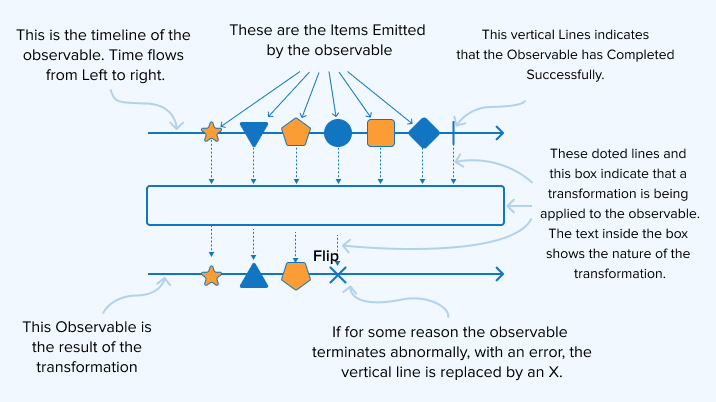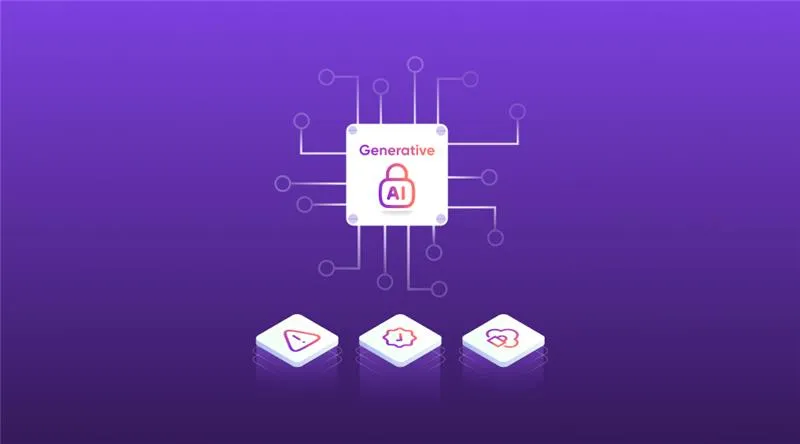The Reactive Revolution: A Deep Dive into the Latest Reactive Java News and Trends
In today’s fast-paced digital landscape, the demand for applications that are responsive, resilient, and scalable has never been greater. Users expect instantaneous feedback, and businesses require systems that can handle unpredictable loads without faltering. This is where the reactive programming paradigm shines. For Java developers, the ecosystem is buzzing with advancements that make building such systems more efficient and powerful than ever. From the core language features in new JDK releases to groundbreaking updates in frameworks and libraries, the latest Reactive Java news signals a mature and rapidly evolving landscape.
The entire Java ecosystem, from persistence layers with Hibernate Reactive to application frameworks like Spring, Quarkus, and Micronaut, is doubling down on non-blocking, asynchronous principles. This article will explore these exciting developments, providing a comprehensive overview of the current state of reactive programming in Java. We will delve into core concepts, examine practical implementations with code examples, discuss the game-changing impact of Project Loom news, and outline best practices for writing high-performance reactive applications.
1. The Reactive Foundation: Core Concepts and Modern Implementations
Before diving into the latest updates, it’s essential to understand the foundational principles that drive reactive programming. These concepts are not new, but their implementation and adoption across the Java ecosystem news have reached a critical mass, making them more relevant than ever.
A Refresher on the Reactive Manifesto
The Reactive Manifesto outlines four key traits of reactive systems:
- Responsive: The system responds in a timely manner if at all possible. This is the cornerstone of usability and utility.
- Resilient: The system stays responsive in the face of failure. Failures are contained, isolated, and handled gracefully.
- Elastic: The system stays responsive under varying workload. It can scale up or down automatically.
- Message Driven: The system relies on asynchronous message-passing to establish a boundary between components that ensures loose coupling and location transparency.
Reactive Streams and Core Implementations
At the heart of reactive Java is the Reactive Streams specification, a standard that governs asynchronous stream processing with non-blocking backpressure. It defines a minimal set of interfaces: Publisher, Subscriber, Subscription, and Processor. This standardization, which became part of the JDK in Java 9 as the java.util.concurrent.Flow API, ensures interoperability between different reactive libraries.
The two dominant implementations of this specification are Project Reactor and RxJava. The latest Spring news is heavily intertwined with Project Reactor, which provides the foundational reactive types, Mono (for a stream of 0 or 1 element) and Flux (for a stream of 0 to N elements), used throughout the Spring WebFlux framework.
Here’s a practical example of creating a simple reactive data pipeline with Project Reactor. Imagine a service that fetches user profiles asynchronously.

import reactor.core.publisher.Flux;
import reactor.core.publisher.Mono;
import java.time.Duration;
// Mock User and Profile Service classes for demonstration
class User {
public final String id;
public final String name;
public User(String id, String name) {
this.id = id;
this.name = name;
}
@Override
public String toString() { return "User{id='" + id + "', name='" + name + "'}"; }
}
class ProfileService {
// Simulates a non-blocking network call to fetch a user's profile
public static Mono<String> fetchUserProfile(String userId) {
return Mono.delay(Duration.ofMillis(100))
.map(d -> "Profile for " + userId);
}
}
public class ReactiveExample {
public static void main(String[] args) {
Flux<User> userStream = Flux.just(
new User("1", "Alice"),
new User("2", "Bob"),
new User("3", "Charlie")
);
System.out.println("Starting reactive pipeline...");
userStream
.flatMap(user -> ProfileService.fetchUserProfile(user.id)
.map(profile -> user.name + " -> " + profile)
)
.subscribe(
System.out::println, // onNext consumer
error -> System.err.println("An error occurred: " + error), // onError consumer
() -> System.out.println("Pipeline complete.") // onComplete runnable
);
// In a real application, the main thread would not be blocked.
// This is just to keep the JVM alive for the demo.
try {
Thread.sleep(1000);
} catch (InterruptedException e) {
e.printStackTrace();
}
}
}In this example, the flatMap operator is crucial. It transforms each User object from the stream into a new asynchronous operation (a Mono fetching the profile) and then flattens the results back into a single stream, all without blocking the main thread.
2. The Evolving Ecosystem: Reactive Persistence and Framework Integration
One of the most significant barriers to building fully reactive applications has historically been the database layer. Traditional JDBC is a blocking API, which means any database call would halt the execution thread, nullifying the benefits of a non-blocking application server. The latest Hibernate news and framework updates are finally solving this problem.
The Game-Changer: Hibernate Reactive 2.0
The release of Hibernate Reactive 2.0 marks a major milestone for the Java community. This project re-implements the core of Hibernate ORM on top of a reactive database driver, allowing developers to interact with their relational databases in a fully non-blocking fashion. It integrates with reactive libraries like Project Reactor and SmallRye Mutiny.
This is not just a wrapper around JDBC; it’s a fundamental shift. Instead of a method returning a List<Product>, it now returns a Flux<Product> or a Multi<Product>. This allows the application to stream results from the database as they become available and process them without waiting for the entire result set to be loaded into memory.
Frameworks like Quarkus, which champion a reactive-first approach, offer seamless integration. Here is an example of a simple repository using Hibernate Reactive with Panache in a Quarkus application.
import io.quarkus.hibernate.reactive.panache.PanacheEntity;
import io.quarkus.hibernate.reactive.panache.PanacheRepository;
import io.smallrye.mutiny.Uni;
import jakarta.enterprise.context.ApplicationScoped;
import jakarta.persistence.Entity;
// 1. Define the JPA Entity
@Entity
public class Product extends PanacheEntity {
public String name;
public double price;
}
// 2. Create the Reactive Panache Repository
@ApplicationScoped
public class ProductRepository implements PanacheRepository<Product> {
// Panache provides reactive methods out of the box
public Uni<Product> findByName(String name) {
return find("name", name).firstResult();
}
}
// 3. Use it in a JAX-RS Resource (or other service)
import jakarta.ws.rs.GET;
import jakarta.ws.rs.Path;
import jakarta.ws.rs.Produces;
import jakarta.ws.rs.core.MediaType;
import jakarta.inject.Inject;
@Path("/products")
public class ProductResource {
@Inject
ProductRepository repository;
@GET
@Path("/name/{name}")
@Produces(MediaType.APPLICATION_JSON)
public Uni<Product> getProductByName(String name) {
// The entire call chain is non-blocking
return repository.findByName(name);
}
}Notice the return type Uni<Product>. Uni is Mutiny’s equivalent of a Mono, representing an asynchronous operation that will eventually yield one item or a failure. This code demonstrates how the entire stack, from the HTTP endpoint down to the database, can operate reactively.
3. Beyond the Basics: Concurrency, Virtual Threads, and Advanced Patterns
The conversation around Java concurrency news has been revolutionized by the introduction of virtual threads, a flagship feature of Project Loom, which officially arrived in Java 21 news. This has led many to ask: do we still need reactive programming?
Project Loom and Its Place in a Reactive World
Virtual threads are lightweight threads managed by the JVM, not the operating system. They make it incredibly cheap to create threads, allowing developers to write simple, blocking-style code (e.g., `InputStream.read()`) that executes with the scalability of non-blocking I/O. The JVM transparently unmounts the virtual thread from its carrier OS thread when it encounters a blocking operation and remounts it when the operation is complete.

However, virtual threads and reactive programming are not competitors; they are complementary tools for different problems.
- Virtual Threads excel at improving the throughput of applications with a “thread-per-request” model that perform blocking I/O. They simplify code by hiding asynchronicity.
- Reactive Programming is a paradigm for processing streams of data asynchronously. It provides a rich vocabulary of operators (
map,filter,flatMap,window) for complex event processing, which is something virtual threads don’t address.
The most powerful approach is to use them together. You can use reactive streams for complex data flow orchestration and offload any remaining, unavoidable blocking operations to virtual threads to prevent them from stalling a precious event loop thread.
import reactor.core.publisher.Mono;
import reactor.core.scheduler.Schedulers;
import java.util.concurrent.ExecutorService;
import java.util.concurrent.Executors;
public class VirtualThreadBridge {
// A legacy blocking I/O method that we cannot change
public static String legacyBlockingCall(String input) {
System.out.println("Executing blocking call on: " + Thread.currentThread());
try {
// Simulate a 200ms blocking operation (e.g., file read, old JDBC call)
Thread.sleep(200);
} catch (InterruptedException e) {
Thread.currentThread().interrupt();
}
return "Result for " + input;
}
public static void main(String[] args) {
// Create an ExecutorService that uses a new virtual thread for each task
ExecutorService virtualThreadExecutor = Executors.newVirtualThreadPerTaskExecutor();
System.out.println("Submitting blocking task from reactive pipeline...");
Mono.fromCallable(() -> legacyBlockingCall("data-123"))
// Schedulers.boundedElastic() is the traditional way for blocking calls.
// With Java 21+, we can use a virtual thread executor for better performance.
.subscribeOn(Schedulers.fromExecutor(virtualThreadExecutor))
.doOnSuccess(result -> System.out.println("Received on: " + Thread.currentThread()))
.subscribe(System.out::println);
// Keep the main thread alive for the demo
try {
Thread.sleep(500);
} catch (InterruptedException e) {
e.printStackTrace();
}
virtualThreadExecutor.shutdown();
}
}This code shows how subscribeOn can be used to delegate the execution of a blocking task to a scheduler backed by virtual threads, ensuring the main reactive pipeline remains non-blocking.
Advanced Error Handling
Real-world systems are unreliable. Reactive streams provide powerful operators for building resilient applications. You can gracefully handle errors, retry failed operations, or provide fallback values.
import reactor.core.publisher.Flux;
import reactor.util.retry.Retry;
import java.time.Duration;
import java.util.concurrent.atomic.AtomicInteger;
public class ResilientPipeline {
// Simulates a call to a flaky remote service
public static Flux<String> callFlakyService() {
AtomicInteger attempts = new AtomicInteger(0);
return Flux.defer(() -> {
int currentAttempt = attempts.incrementAndGet();
if (currentAttempt < 3) {
System.out.println("Attempt " + currentAttempt + ": Service call failed.");
return Flux.error(new RuntimeException("Service Unavailable"));
} else {
System.out.println("Attempt " + currentAttempt + ": Service call succeeded.");
return Flux.just("Data A", "Data B");
}
});
}
public static void main(String[] args) {
callFlakyService()
.retryWhen(Retry.backoff(3, Duration.ofMillis(100))
.doBeforeRetry(retrySignal -> System.out.println("Retrying due to: " + retrySignal.failure().getMessage()))
)
.onErrorResume(error -> {
System.err.println("Retries failed. Providing fallback data. Error: " + error.getMessage());
return Flux.just("Cached Data X", "Cached Data Y");
})
.subscribe(System.out::println);
// Keep main thread alive for demo
try {
Thread.sleep(2000);
} catch (InterruptedException e) {
e.printStackTrace();
}
}
}4. Best Practices, Performance, and Tooling

As you adopt reactive programming, following best practices is key to avoiding common pitfalls and maximizing performance. This section offers some Java wisdom tips news for both newcomers and experienced developers.
Writing Clean and Maintainable Reactive Code
- Never Block the Event Loop: The most critical rule. Avoid calling blocking methods like
.block(),Thread.sleep(), or traditional blocking I/O within a reactive pipeline (unless you’ve explicitly moved it to a dedicated scheduler, as shown with virtual threads). Blocking an event loop thread can lead to catastrophic performance degradation. - Use Debugging Tools: Reactive stack traces can be notoriously difficult to read. Project Reactor provides the
checkpoint()operator and a debug agent to make debugging easier. Use them during development to get meaningful stack traces. - Manage Context: In an asynchronous world, thread-local variables don’t work reliably. Use the Reactor Context or similar mechanisms for propagating transactional or security information through your pipeline.
Modern Tooling and Build Systems
A modern reactive application relies on a robust set of tools. The latest Gradle news and Maven updates provide better support for managing the complex dependencies often found in reactive projects. For testing, libraries like reactor-test with its StepVerifier are indispensable for verifying the behavior of reactive streams in a deterministic way, complementing the latest advancements in JUnit news and Mockito news for a comprehensive testing strategy.
Conclusion: The Future is Asynchronous and Reactive
The wave of Reactive Java news across the ecosystem makes one thing clear: reactive programming is no longer a niche paradigm but a mainstream approach for building modern, high-performance Java applications. With foundational support from the latest OpenJDK news and powerful new features in Java 21, the barrier to entry has never been lower.
The synergy between mature reactive frameworks, the game-changing potential of Hibernate Reactive for non-blocking data access, and the simplified concurrency model offered by virtual threads creates a powerful toolkit for developers. By understanding these tools and how they complement each other, you can build systems that are not only scalable and resilient but also maintainable and a joy to develop. The journey into reactive Java is an investment in the future of application development, and there has never been a better time to dive in.

